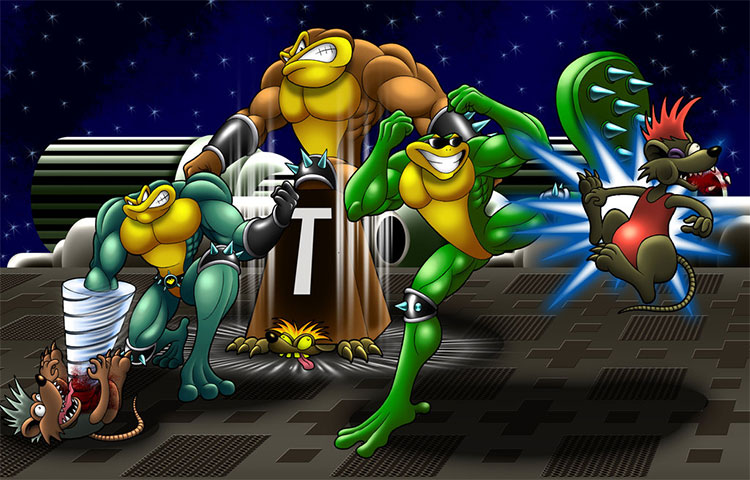

When she enters the frame, Shovel Knight reaches toward her, and even if you manage to catch her, she disappears and the dream ends. Text tells you to ~SAVE HER!~ as enemies close in from all sides. After every few stages, Shovel Knight is shown dreaming about Shield Knight falling from the sky. Finally, Shovel Knight also experiments with a more modern kind of storytelling unique to the medium of video games. Then, just before each boss battle, Shovel Knight trades dialogue with his opponent, much like in the later Mega Man X titles.

The expository cut scene at the beginning is a recognizable NES trope, simple and segregated from the gameplay. Though the plot is simple, it is delivered in a variety of ways, along the spectrum of classic and modern. The knights of the Order flesh out the tone of the game world with their backstories and dialogue. Propeller Knight is fought on his airship, of which the propellers and engines serve as the stage hazards, blowing Shovel Knight across pits and into enemies. Plague Knight, a mischievous chemist, has a laboratory-themed stage with exploding enemies and destructible platforms. The Order of No Quarter provides a logical structure to the game, just like the Robot Masters in Mega Man: each knight in the Order awaits Shovel Knight at the end of an appropriately-themed stage on the world map. The leader and the one behind everything.

He has some shared past with Shovel Knight, though it is not elaborated upon during the game. His size and armor make him an intimidating foe, and during his battle he can tear up the arena to reveal instant-kill spikes along the floor. The largest and most imposing member of the Order, he guards a shipwrecked vessel in the frozen tundra with his snow shovel. Shovel Knight sets out to defeat the Order and reach the Tower of Fate, hoping to learn of what happened to Shield Knight. Shovel Knight, despondent, turns to a life of pastoral solitude, and in his absence a villainous Enchantress seizes power with her eight knights, the Order of No Quarter. The plot, as laid out in the opening cutscene: In an age of adventurers, two inseparable heroes, Shovel Knight and Shield Knight, come across a cursed amulet in the Tower of Fate which whisks Shield Knight away with evil magic. It is the first game by indie studio Yacht Club Games, which has a number of key former employees of WayForward Technologies (best known for Nintendo remakes, Disney games, and Shantae), including the designer Sean Velasco and audio designer Jake Kaufman.
#Battle toads shovel knight sprite for mac
Shovel Knight was funded by a Kickstarter campaign in April 2013 and released in June 2014 for Windows, Wii U, and 3DS, then for Mac that September and Linux in October. Shovel Knight, however, builds an unmistakably modern game on these classic foundations, and the end result is a polished, fun, and surprisingly new experience. These elements certainly make the game fun, and they’re executed quite well, but they’re hardly enough to make the game fun on their own. Its derivative elements are clear – at its core, it looks and feels like a Mega Man game, but it borrows the sword swinging (and bouncing) of Zelda 2 combat and Castlevania subweapons, with a Super Mario Bros. It’s easy to look at Shovel Knight as yet another indie “nostalgia game” dedicated to revisiting and monetizing your childhood.


 0 kommentar(er)
0 kommentar(er)
